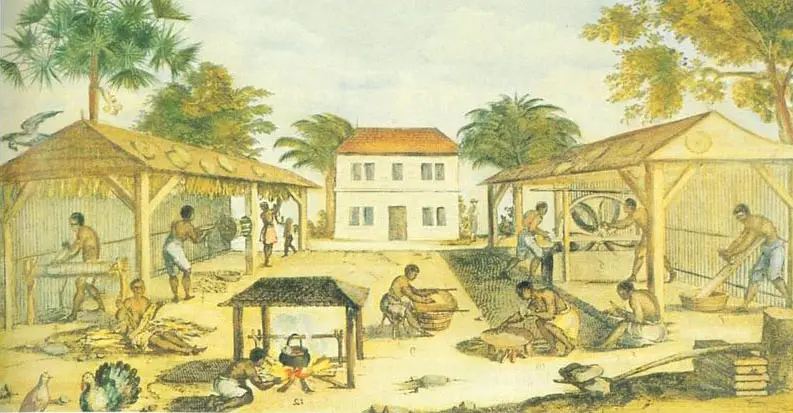The Spread of Slavery
During the 16th century, slavery was not only accepted in many of the European countries but was encouraged as labor for the new lands that they were expanding into.
Europeans looked at other cultures and people of color as barbarians and less than human. Even those that they successfully converted to Christianity were considered to only have value as slaves.
Slaves were gathered from just about every land that the Europeans tried to settle, and there were many slaves that tried to lead revolts.

The British settlements into the New World required a lot of labor to do the hard work. Every one of the new colonies had slaves to take care of the plantations and farms as well as due to the hard work in the harbors.
- Having and owning slaves was a type of status. It elevated what the white people thought of themselves and allowed the white colonists to feel a kind of bond with each other.
- Transportation of slaves to the colonies increased due to King Charles II of England. In 1660 he created the Royal African Company, headed by his brother James II, which was designed to transport slaves and goods from Africa.
- When James II became king, he made a lot of money on the slave market. It’s believed that around 125,000 slaves were bought between 1672 and 1713. The voyage to the New World was dangerous, and the slaves were packed into the ships in such unhealthy situations that 20% died on the way.
- In 1689 the monopoly of the Royal African Company stopped, and it was up to English merchants to continue the slave market. During that time, they were transporting slaves to a lot of different places, including the English colonies in the New World, Barbados, and the West Indies. The merchants had a great profit in selling the slaves that were living in misery.
- Those slaves that survived tried to adapt to their new lives. They brought with them their sense of community and many of their traditional healing practices and customs.
- There were others that fought against their slave conditions, running away and forming what was called “maroon communities” that resisted being captured. One of the best known of these groups was in Jamaica, and they fought against the British.
- Slaves from all over were constantly trying to reject their condition and become free. Each time they made any attempt, there was huge retaliation from their white owners. Even with punishments, they continued to rebel.
- In 1739 there was an uprising of the slaves in South Carolina called the “Stono Rebellion.” A slave named Jemmy, who was literate, led a group of slaves against the white colonists. Although the white militia managed to put the uprising down, many of the white people were killed. Those slaves that were captured from the revolt were either killed or sold to the West Indies. Due to this rebellion, South Carolina passed the Negro Act of 1740, which imposed on the behavior of slaves by not allowing them to grow their own food, gather in large groups, or free travel.
- New York City has always been home to many different cultures and ethnicities. In the 1740s, one in five people in New York was a slave, and this led to increasing tensions. By 1741 there were signs of rebellion when 13 fires broke out in the city, one burning down Fort George. Slaves were arrested and interrogated in trials known as the “New York Conspiracy Trials of 1741,” and the government executed 17 New Yorkers and burned 13 black men at the stake in a public display. Four whites who were thought to be involved were hanged, and 70 slaves were sold and sent to the West Indies.
Q&A:
Why did early white Europeans encourage and accept slavery?
they thought people of color were barbarians and less than human
What company did King Charles II of England start to promote slavery?
Royal African Company
When some slaves ran away, they gathered in groups that were called by what name?
maroon communities
What is the name of the 1739 slave uprising in South Carolina that resulted in harsher slave laws for the state?
Stono Rebellion
What were the three most popular areas that the British shipped slaves to?
English colonies in the New World, Barbados, and the West Indies
Why was it popular for white people to own slaves?
it was a symbol of status/made them feel superior to people of color



